Printable Version of Topic
Click here to view this topic in its original format
914World.com _ 914World Garage _ Rust Repair Questions
Posted by: bkrantz Sep 15 2019, 08:26 PM
I have had my "new" 73 2.0 home for a week, and started into a detailed assessment. I have stripped out the interior to get a look at the floors. I found some rust holes around the seat brackets, the cross member on the passenger side, and both front corners. Looks like I will be doing some work!
First question: is it worth trying to cut in specific patches? The rust touches the inner longs in only one spot. Or do what I see most people do, drill out all the perimeter spot welds and use full floor panels?
Second question: the front corners have serious but small holes. Should I aim for minimal patches in those spots?
So far, the only other rust needing panel replacement is the right engine shelf, some holes in the upper firewall on the passenger side, and two tiny holes in the inner fender where the battery tray attached. The top of the hell hole has was looks like surface rust, but I will look at that once I have the engine out.
Attached thumbnail(s)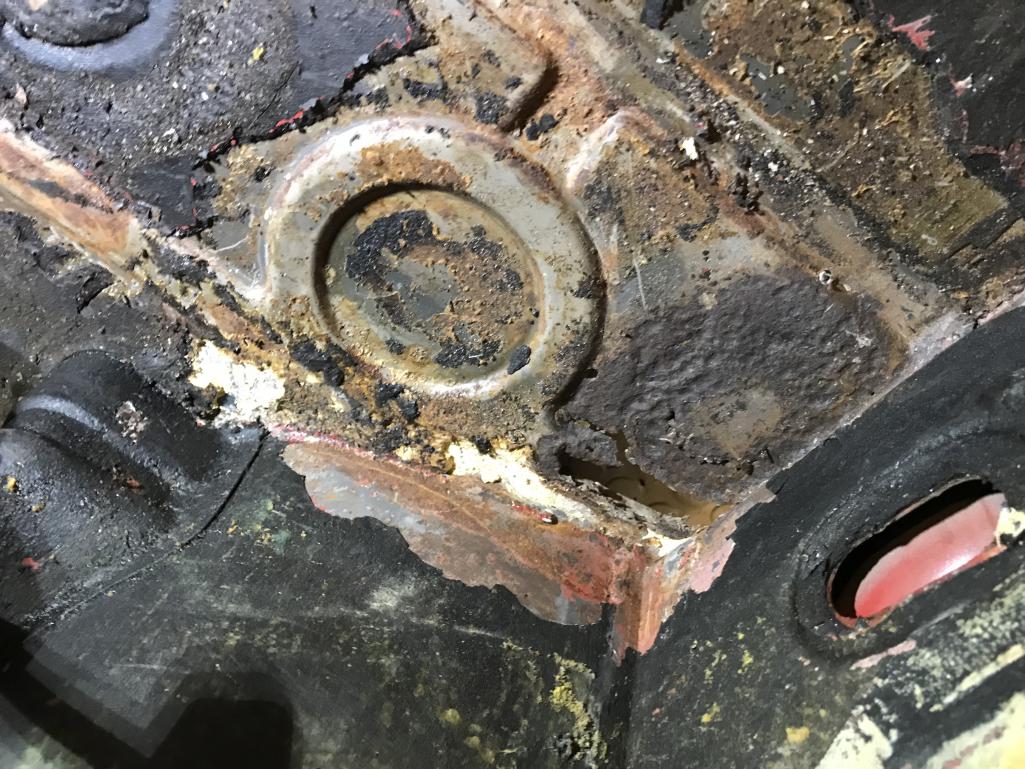
Posted by: Nacho Sep 15 2019, 09:10 PM
Doesn't look that bad. Trim back to where you get clean metal and fab a small patch. You'll be fine.
Posted by: rjames Sep 15 2019, 09:37 PM
Get all of the tar up on the entire floor pan so you know exactly what you’re dealing with.
Posted by: draganc Sep 15 2019, 09:42 PM
Get all of the tar up on the entire floor pan so you know exactly what you’re dealing with.
+1
Also, order a cheap oscillating multi tool (i.e. Harbor Freight) and use the metal scraper to remove the tar of the floor panels. took me maybe 20min for both sides. don't waste your time with a heat gun!
Posted by: pploco Sep 17 2019, 10:47 AM
I used this scaler tool to remove all the crud from my floorboards. Works like a charm, just loud.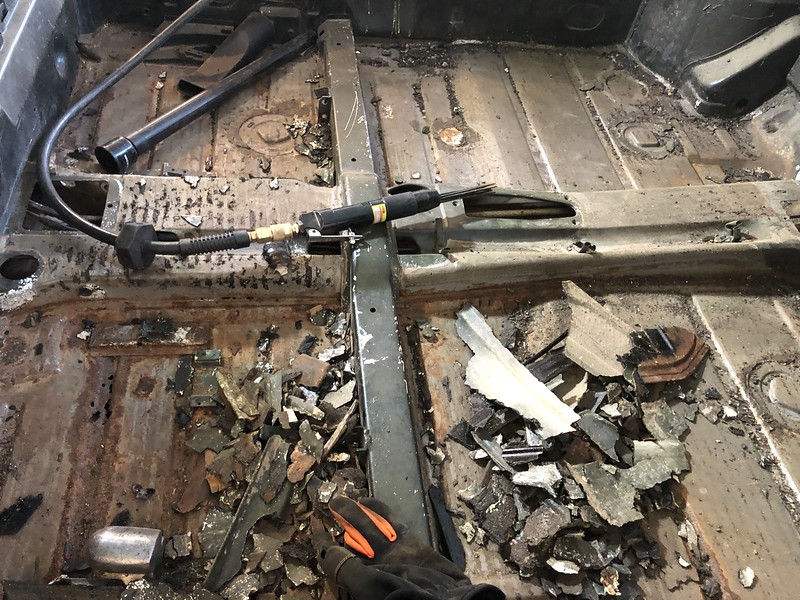
Posted by: dr914@autoatlanta.com Sep 17 2019, 11:09 AM
if just concentrated in a few areas, wire brush or sandblast and see how far the rust goes and then you can patch by seam and spot welding depending on the area of the patch, we make rust panels to cover more than just an area in question, but often wind up cutting them down and only using a piece of the panel to do the minimum rust repari possible while preserving the original look and integrity of the body
I would never remove all of the floor pan tar except if it was already coming apart. We have factory look die cut floor pan tar panels to duplicate the original
I have had my "new" 73 2.0 home for a week, and started into a detailed assessment. I have stripped out the interior to get a look at the floors. I found some rust holes around the seat brackets, the cross member on the passenger side, and both front corners. Looks like I will be doing some work!
First question: is it worth trying to cut in specific patches? The rust touches the inner longs in only one spot. Or do what I see most people do, drill out all the perimeter spot welds and use full floor panels?
Second question: the front corners have serious but small holes. Should I aim for minimal patches in those spots?
So far, the only other rust needing panel replacement is the right engine shelf, some holes in the upper firewall on the passenger side, and two tiny holes in the inner fender where the battery tray attached. The top of the hell hole has was looks like surface rust, but I will look at that once I have the engine out.
Posted by: dr914@autoatlanta.com Sep 17 2019, 11:10 AM
surprising that the front is rusted and the rear looks very good!
I used this scaler tool to remove all the crud from my floorboards. Works like a charm, just loud.

Posted by: bkrantz Sep 17 2019, 09:27 PM
Thanks, everyone. Anybody know a source for just the front corners of the floor?
Posted by: Superhawk996 Sep 18 2019, 01:53 AM
Thanks, everyone. Anybody know a source for just the front corners of the floor?
All the usual suspects (Restoration Design, Auto Atlanta, Pelican) sell floor pans. You won't find just the front corner - as in a small 1' x 1' patch. RD and AA tend to be the original sources for metal.
Just buy what you need and cut to size. Floor pans are sold in 1/2's. Either left / right or front / rear. I think someone might be offering in 1/4's but I'm not sure who at the moment.
Posted by: bbrock Sep 18 2019, 01:18 PM
The easy way is to do as Phil ( @http://www.914world.com/bbs2/index.php?showuser=22428 ) suggests. The cheap way - and I mean really cheap - is to buy some 18 gauge sheet metal and bring out your inner tinsmith to fabricate your own patches. It is easier than you think. If I can do it, so can your dog. ![]()
Also, I sort of disagree with George about taking out the tar. That tar can hide a lot of ugly underneath it and unless you have the experience assessing good and bad floor pans with tar in place, I think it is wise to remove it and know the condition of your floor. My floor was a sandwich of rust held between a layer of tar on top and undercoating underneath that hid the horror in between.
Posted by: dr914@autoatlanta.com Sep 18 2019, 01:41 PM
if the tar is well sealed and not loose it always looks good underneath, if it is not tightly glued sealed, then yes we see rust
The easy way is to do as Phil ( @http://www.914world.com/bbs2/index.php?showuser=22428 ) suggests. The cheap way - and I mean really cheap - is to buy some 18 gauge sheet metal and bring out your inner tinsmith to fabricate your own patches. It is easier than you think. If I can do it, so can your dog.
Also, I sort of disagree with George about taking out the tar. That tar can hide a lot of ugly underneath it and unless you have the experience assessing good and bad floor pans with tar in place, I think it is wise to remove it and know the condition of your floor. My floor was a sandwich of rust held between a layer of tar on top and undercoating underneath that hid the horror in between.
Posted by: bkrantz Sep 18 2019, 09:14 PM
So far I have exposed the metal, some very clean, some rusty to variable degrees, in all the "troughs" plus in any high areas that showed rust at all. I might go ahead and remove all the original asphalt, treat and paint anything I do not replace, and get new sound deadening stuff.
Posted by: rjames Sep 18 2019, 10:49 PM
So far I have exposed the metal, some very clean, some rusty to variable degrees, in all the "troughs" plus in any high areas that showed rust at all. I might go ahead and remove all the original asphalt, treat and paint anything I do not replace, and get new sound deadening stuff.
That’s the right way to do it.
Posted by: Rand Sep 18 2019, 11:06 PM
Doesn't look that bad. Trim back to where you get clean metal and fab a small patch. You'll be fine.
The so called doctor says. Yeah, not so much. Time for a reality check.
Posted by: John Sep 19 2019, 01:58 PM
If I were to order the tar (sound deadening), how would I get this stuff hot enough to stick and contour to the sheet metal? I removed all the tar from mine in order to assess the rust (which there was very little). Now, I'm wishing I would have left it alone, but it was dried out and crumbling. Now I wish it were a bit more quiet. Funny how loud relatively large flat sheet metal panels are.
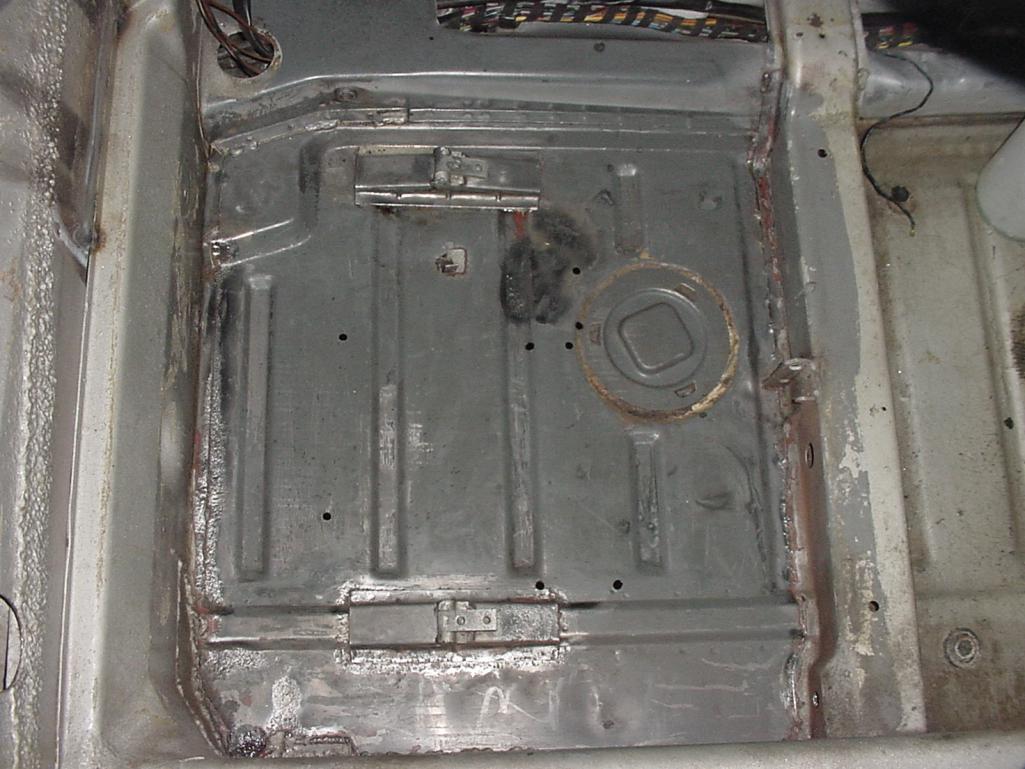
Posted by: Superhawk996 Sep 19 2019, 02:22 PM
If I were to order the tar (sound deadening), how would I get this stuff hot enough to stick and contour to the sheet metal? I removed all the tar from mine in order to assess the rust (which there was very little). Now, I'm wishing I would have left it alone, but it was dried out and crumbling. Now I wish it were a bit more quiet. Funny how loud relatively large flat sheet metal panels are.

Dynamat works well if you don’t want the factory look.
Heat gun will work for A.A. style tar mats.
You are correct that untreated panels are very loud.
Posted by: bbrock Sep 19 2019, 05:24 PM
There are a few less expensive brands than Dynamat that are pretty much the same thing and work just as well. I used 80 mil Noico on mine. I'm a tad bit anal about original appearance so I cut it to match the original tar pattern and then primered and painted it.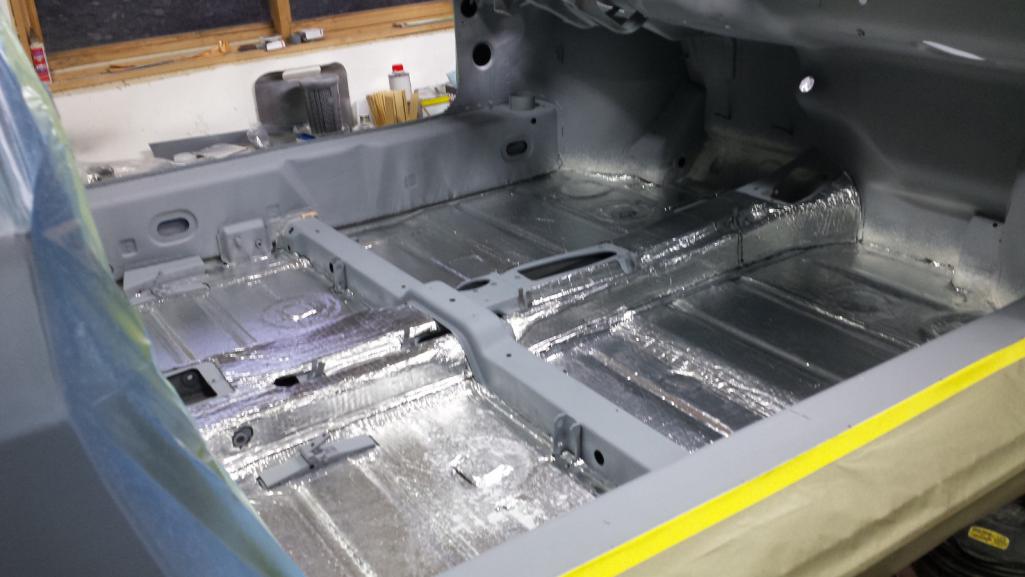
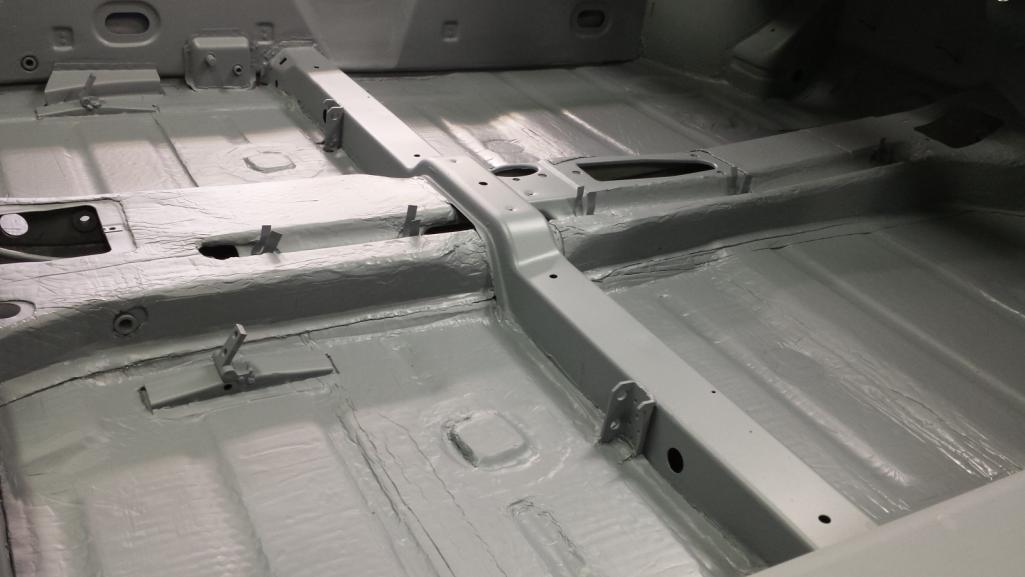
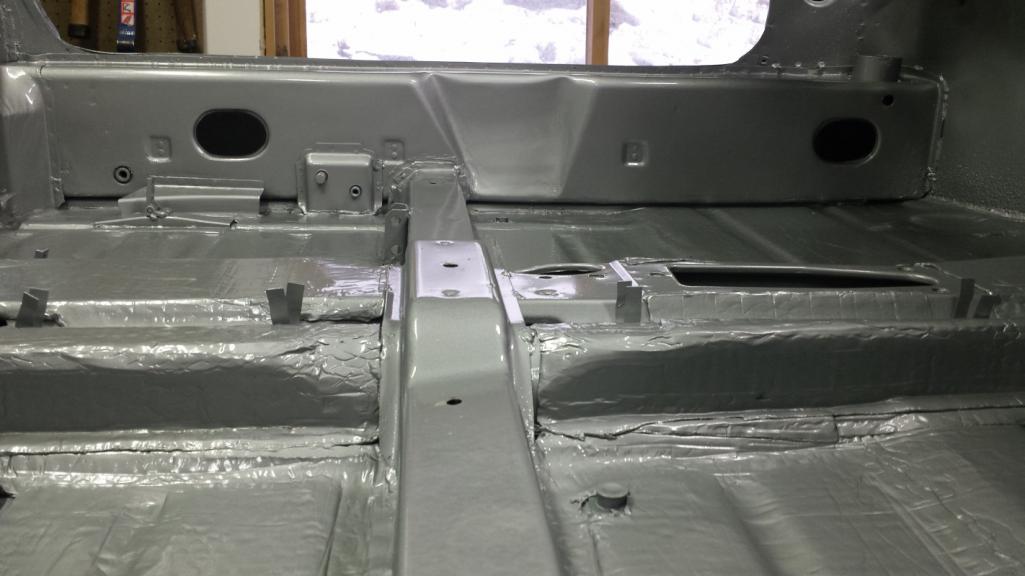
Posted by: doug_b_928 Sep 19 2019, 05:52 PM
I’m reluctant to put one of these sound deadeners back in due to concerns with having to remove it someday... are any of these relatively easy to remove?
Posted by: Superhawk996 Sep 19 2019, 06:07 PM
@http://www.914world.com/bbs2/index.php?showuser=15382
Repair the rust right - do it once. It will last the rest of your lifetime.
With regard to take off in the future, any of the NVH (Noise Vibration Harshness) treatments will come off if needed but should never be necessary. Otherwise its the same scrape / multi-tool process at worst.
To get the proper NVH reduction, the mat basically needs to be bonded to the steel as a constrained layer. Either as softer mastic or hard tar. That shear layer is what provides the noise reduction in conjunction with a mass damping effect.
You could just lay in "shoddy" pad which is that underlayment you find in OEM cars under carpet. It will provide some noise decrease but is no where near as effective as a constrained layer of damping material.
Posted by: doug_b_928 Sep 19 2019, 06:21 PM
Interesting... I haven’t heard of shoddy pad. Thanks for the info.
Posted by: bbrock Sep 19 2019, 07:43 PM
And pads and constraint layers are best at dampening different types of noise. The elastic mass constraint layers dampen resonant vibration in metal and such, whereas the pads are better at attentuating sound waves in the air. Since most of the noise is caused by resonant drumming of the sheet metal in the chassis, constraint layers are going to cut more noise in the cabin like Phil said. The reason the dreaded firewall mat is thick fibrous material is because it is designed to attenuate sound waves from the engine before they pass into the cabin. Maximum sound dampening combines both materials.
I'm probably going to lay some jute padding under my floor mats but only if they can be installed in stealth mode.
Powered by Invision Power Board (http://www.invisionboard.com)
© Invision Power Services (http://www.invisionpower.com)
